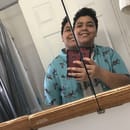Few issues are universal, but one that might just get there is body image. Although we may all have different bodies, we all have one. It’s the only one we have and while there are things we can do to alter our bodies—whether we change weight, dye our hair, or get piercings or tattoos—at the end of the day, we only possess limited control over our bodies. Learning to love the body that you have is a journey and has become such a struggle; especially with our culture continually bombarding you with what would be considered the “ideal.” The body positivity movement arose to fight against those negative feelings and messages. But somehow this movement founded upon and named after positivity has become a place of policing and dismissal of pain. How?
The body positivity movement was formed to empower and liberate those who have bodies that are not deemed desirable by society. A wide range of bodies can fall into this category, especially with Photoshop and airbrushing allow the media to present us an ideal that is objectively out of reach. However, fat people are the demographic most often thought of. Fat people needed a movement because their oppression doesn’t lie just within themselves but also within the fabric of our society.
Over the past few years, body positivity has been embraced by almost everyone as we all struggle to love our bodies in a society that doesn’t offer much love for any body type. This leaves those who are disenfranchised by society feeling pushed out of the space they created. These feelings have lead to many conversations online among individuals while they debate and compare pain felt in regards to their bodies.
The problem within body positivity isn’t the goal but the lack of understanding of what is at play. The difference between body positivity concerning a thin person versus a fat person is where the work and oppression happens. Both types of people have to fight to love their bodies, but the type of fight and intensity are different. Working against your own scripts and the media’s ideal body are one thing, while working against a society and structures built against while facing discrimination because of your body is another. Pain is experienced by both people and is damaging and toxic but they are not the same situations.
These conversations are important to have because behind these conversations and debates are real people struggling with real issues of self-worth and value. Self-love and body positivity are important, no matter your shape or size but, it’s important to recognize privilege and positions of advantage so we can become more empathetic people.



